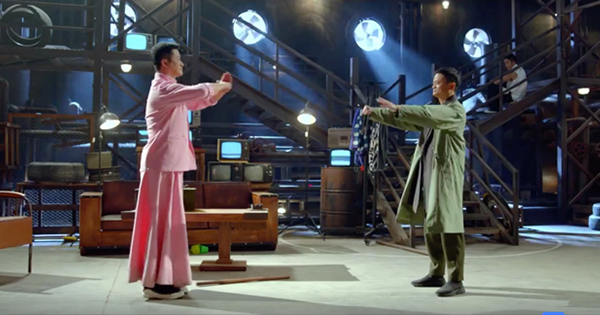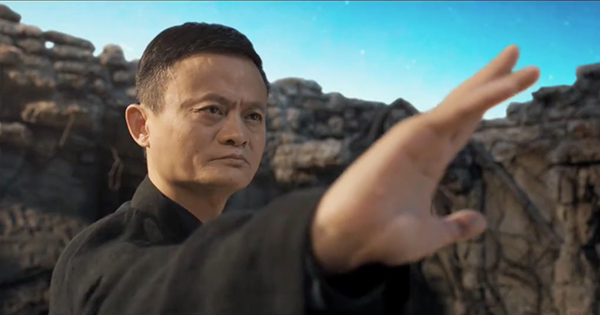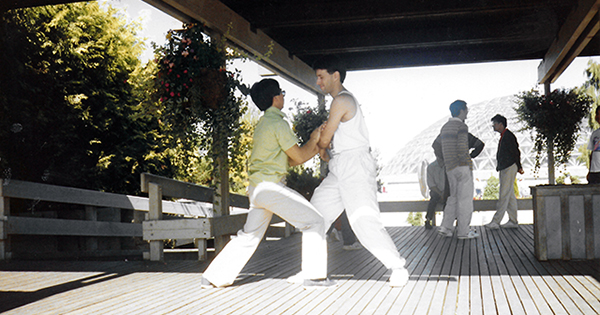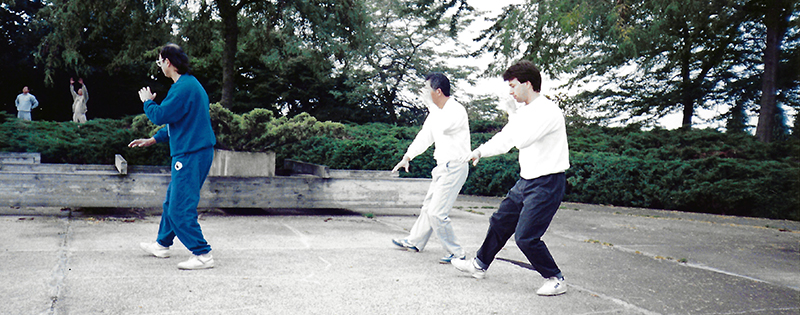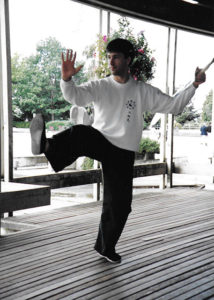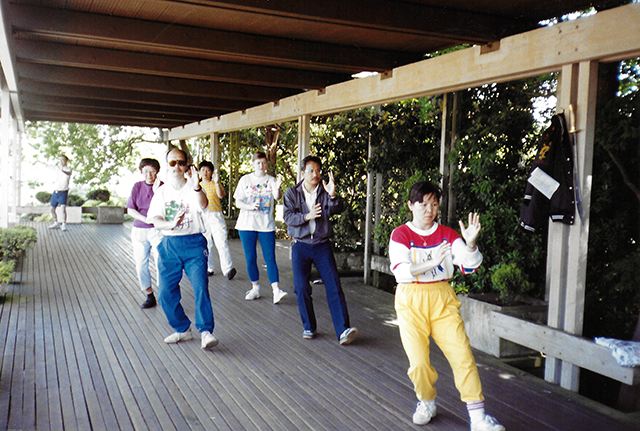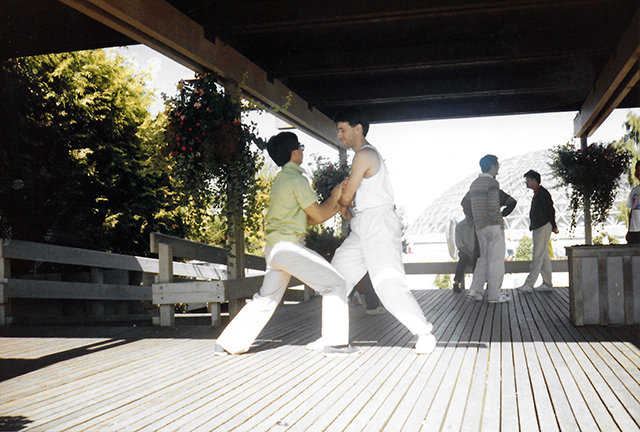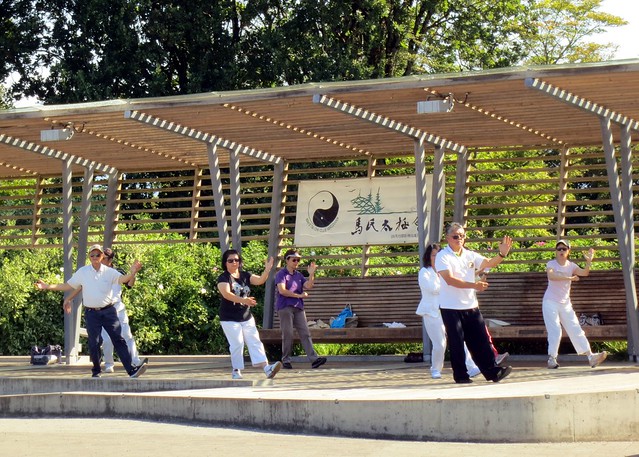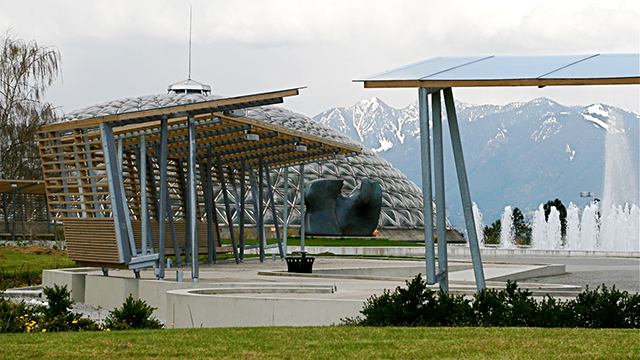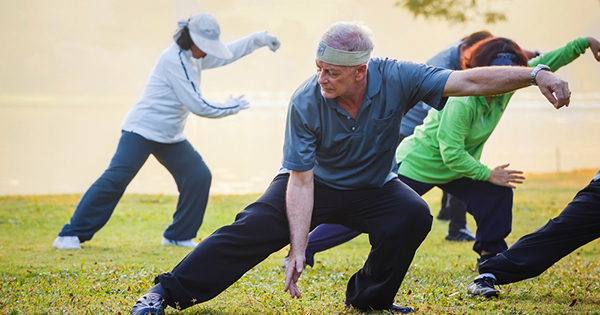
What is Tai Chi?
While suffering from any chronic pains, one always think about yoga or some exercises related to the pain they are experiencing, but they never think about martial arts. Martial arts is mainly associated with self-defense, kicking, boxing and the likes.
But Tai Chi is a form of slow, rhythmic and meditative moves of martial arts originated in China. It is believed to form a journey of life which an individual lead after learning Tai Chi. It builds your inner body strength and reaps many benefits out of it apart from self-defense as it is an all-rounder form of martial art.
When people practice it consistently, they generate more internal energy which ultimately leads them to better health, balanced mental state, agility and improved balance.
Tai Chi is originated in China and dates back as far as 2500 years. Also known as shadow boxing, this traditional form of Chinese martial arts works on the philosophy of yin and yang, i.e., working on the perpetual balance effortlessly.
Yin and Yang are the two extremes, the opposites. For, eg. Yin being soft and feminine, and Yang is the rough and masculine. According to the legends, a perfectly harmonized person will show this balance with his or her tranquillity and peacefulness of mind.
It is first said to be originated by Chen Wangting, known as Chen style, around 1670. Later, Yang Lu-chan modified it with higher stances, gentle and slow movements to make it accessible for most people. He learned it from Chen village before modifying it, giving it his style. Many authors have also called it a form of aerobics.
How Can Tai Chi Be Useful In Daily Life?
Tai Chi is a form of slow exercises which requires its own pace and energy for the one to get used to it. It needs the practice to allow it to be a part of your routine. And it needs the dedication to master it for the most effective results. There are various benefits of Tai Chi:
- It delays aging.
- It helps maintain balance in the body and mind.
- It strengthens muscles and tendons, providing flexibility.
- It cures arthritis, heart diseases, high blood pressures, various types of cancer, and many other serious ailments.
- It helps get rid of stress and depression.
- It has a low risk of injury as the movements are slow and gentle.
- It helps regulate the breathing and blood circulation in the body.
One of the various health problems in today’s generation is that of chronic pains. Tai Chi helps cure it through its multiple exercises.
1. Salutation
This is supposed to be done at the beginning and end of every Tai Chi routine. For salutation, stand on the mat with your feet wide open. Open turn towards one side with your knees slightly bent.
Keep your arms on your side and relax your spine. Now slowly elevate your arms upwards inhaling and exhale while getting back to normal position. Repeat this for 5 times.
2. Circle The Globe
Hold your arms in front of you like you are cradling a basketball. Move your right foot slightly towards the right, now bring your torso along with it.
Moving the hands across your body, breathe out. Breathe in as you rotate your hands towards the left side of your body, shifting your weight towards the left entirely.
3. Back Twist
Stand with your feet pointing forward, generally as you would stand. Now move your body towards one side, as much as you can bend. Get up to the usual position and lean towards the other side. Give rest your arms and heel that lower back pain.
4. Horse Stance
Stand with your feet wide apart. Keeping your spine and neck straight, start bending from your knees to 90 degrees. Bring your arms in front of you aligned with your chest. Hold the position for as long as you can and then repeat the whole exercise. Stop if you feel any pain during bending.
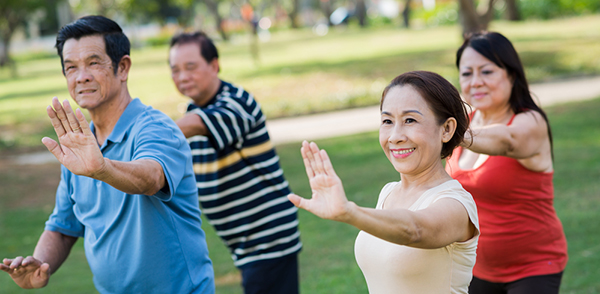
5. Hands Waving Clouds
To get relief from the arthritis joint pain, people didn’t even know that they can do Tai Chi. It is such a bliss to know this form of martial art and that it can help you from recover so many joint pains.
To do this position, stand with your feet a few feet wider. Now hold your arms in front of you with your left hand over your right hand. Put all your weight towards the left and vice versa. But make sure to move your body instead of your shoulders. These little details can be most useful while practicing this form.
6. Tai Chi Bowing
For this, stand straight with your feet wider. Align your backbone and neck in a single line. Move your hands in front of you with the palms facing towards you. Now inhale as you bend vertebrae by vertebrae. Exhale as you go up.
7. Tai Chi Awakening
Stand in the basic Tai Chi position with your feet wider and spine straight. Now bring your hands in front of you, palms facing towards you, flexible at wrists and the height till your hips.
Interlocking the fingers, with the full force of your hands, bring your arms up to the level of your chest, inhaling. Exhale as you take your arms to the height of your hips.
Conclusion
According to one NCBI study, Tai Chi has positive results on lower back pains and other chronic pains if done right. Apart from these exercises, Tai Chi is so vast that it would require years of learning and practice. Mostly it is seen that only aged people perform it but it is popular with all age groups as a best practice for self-defense.
Tai Chi is simple and can serve you for many purposes. You just have to pick out your purpose and start practicing accordingly, of course by an expert teacher. By the end of 2007, over a million people had learned and enjoyed it. The growing popularity is the proof of giving answers to people’s curiosities towards this art form.
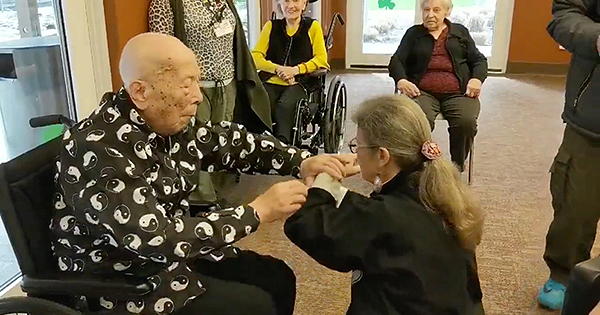
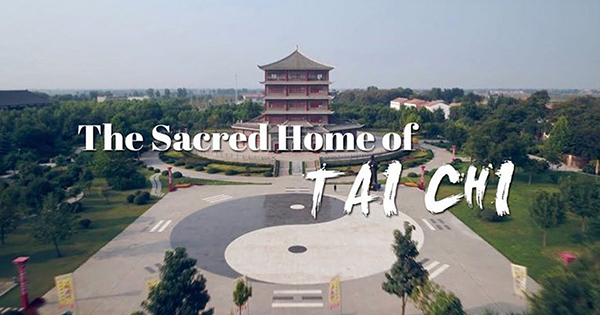
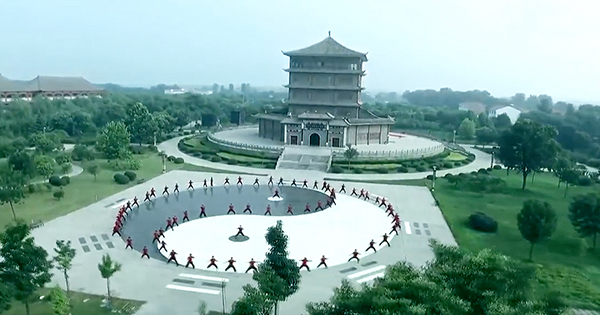
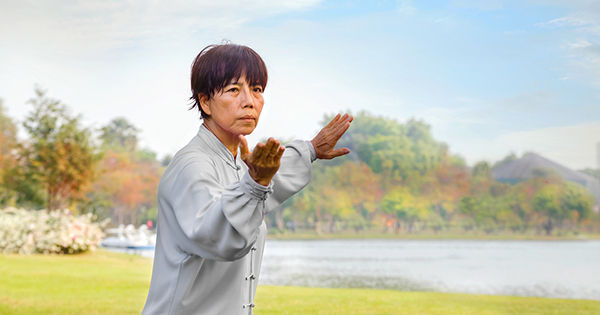
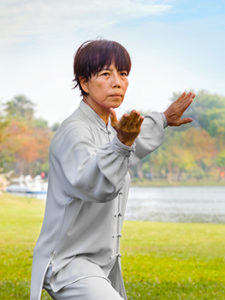 The ancient martial art Tai Chi, long a means of gentle, meditative exercise, is riding a recent wave of popularity by physical therapists and other individuals interested in using it to rehabilitate injuries and promote health. Tai Chi, which has roots dating back to 13th century China, has been the most popular health regimen to keep an aging population healthy in China, as it requires no special equipment and can be done almost anywhere. Roughly 200 million people practice Tai Chi today, and that number is growing as more people discover the effectiveness of its low-impact, low stress movement. There are five different types of Tai Chi, Chen-style, Yang-style, Wu- or Wu (Hao)-style, Wu-style and Sun-style. It is usually thought of in conjunction with Qi Gong, which has been called the “grammar” of Tai Chi due to its focus on tiny movements.
The ancient martial art Tai Chi, long a means of gentle, meditative exercise, is riding a recent wave of popularity by physical therapists and other individuals interested in using it to rehabilitate injuries and promote health. Tai Chi, which has roots dating back to 13th century China, has been the most popular health regimen to keep an aging population healthy in China, as it requires no special equipment and can be done almost anywhere. Roughly 200 million people practice Tai Chi today, and that number is growing as more people discover the effectiveness of its low-impact, low stress movement. There are five different types of Tai Chi, Chen-style, Yang-style, Wu- or Wu (Hao)-style, Wu-style and Sun-style. It is usually thought of in conjunction with Qi Gong, which has been called the “grammar” of Tai Chi due to its focus on tiny movements.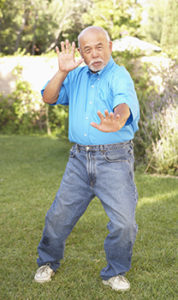 In one study comparing men over the age of 65 with at least ten years experience doing Tai Chi (and no other form of exercise) against a group of sedentary men, it was found that the Tai Chi practitioners scored better on tests of flexibility, cardiovascular function and balance. Another study, which focused on individuals with mild balance disorders, found that after eight weeks of Tai Chi training, significant improvement in performance on a standard balance test was noted. Researchers also found that Tai Chi decreases fear of falling and increases self-confidence in those who practice who are over the age of 70; fully 54% of those studied cited improved balance as the reason for their increased self-confidence. This self-confidence appears to be correlated with motivation to continue exercising, long viewed as a key factor in maintaining health among the elderly.
In one study comparing men over the age of 65 with at least ten years experience doing Tai Chi (and no other form of exercise) against a group of sedentary men, it was found that the Tai Chi practitioners scored better on tests of flexibility, cardiovascular function and balance. Another study, which focused on individuals with mild balance disorders, found that after eight weeks of Tai Chi training, significant improvement in performance on a standard balance test was noted. Researchers also found that Tai Chi decreases fear of falling and increases self-confidence in those who practice who are over the age of 70; fully 54% of those studied cited improved balance as the reason for their increased self-confidence. This self-confidence appears to be correlated with motivation to continue exercising, long viewed as a key factor in maintaining health among the elderly.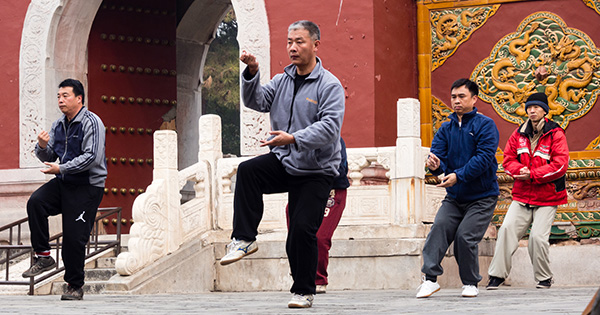
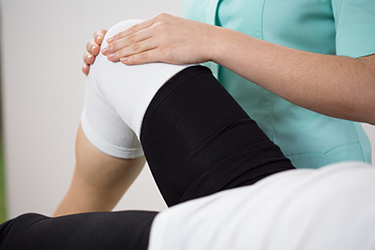 No matter what exercise you do, remember you don’t want to rotate your knees. Unlike your hips or ankles, your knees are hinge joints and not designed to rotate. Also, there can be several different reasons that can cause knee pain. If there is an underlying issue, exercises may or may not relieve the pain but that will not be long lasting, so know and treating the cause is important.
No matter what exercise you do, remember you don’t want to rotate your knees. Unlike your hips or ankles, your knees are hinge joints and not designed to rotate. Also, there can be several different reasons that can cause knee pain. If there is an underlying issue, exercises may or may not relieve the pain but that will not be long lasting, so know and treating the cause is important. 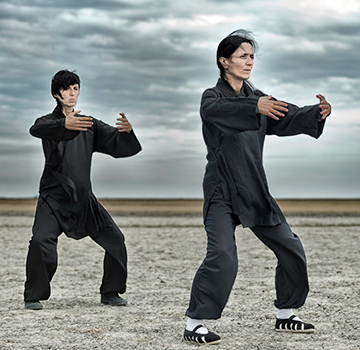 Probably one of the best tai chi exercises for knee rehabilitation. Just as the name suggests, the workout mimics the stance as if you’re riding a horse. Stand with your knees stretched slightly wider than your shoulders, feet right under the knees and pointing straight ahead, and from there try to round your crotch like you’re on a horse by bending a little and relaxing the knees. Hold your arms in front of you at the level of your heart, with elbows bent at about 40 degrees as if you’re hugging a tree. This stance gives this exercise it another name, i.e. hug the dree. Sink your shoulder, avoid leaning forward, keep your back straight, and gently pull your chin in. The goal is to hold this stance for 20 minutes, but as a beginner don’t worry if you get fatigued far earlier.
Probably one of the best tai chi exercises for knee rehabilitation. Just as the name suggests, the workout mimics the stance as if you’re riding a horse. Stand with your knees stretched slightly wider than your shoulders, feet right under the knees and pointing straight ahead, and from there try to round your crotch like you’re on a horse by bending a little and relaxing the knees. Hold your arms in front of you at the level of your heart, with elbows bent at about 40 degrees as if you’re hugging a tree. This stance gives this exercise it another name, i.e. hug the dree. Sink your shoulder, avoid leaning forward, keep your back straight, and gently pull your chin in. The goal is to hold this stance for 20 minutes, but as a beginner don’t worry if you get fatigued far earlier.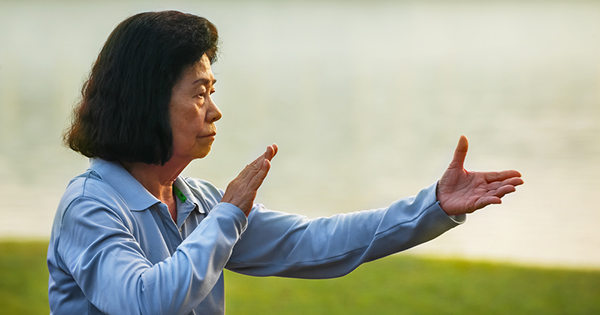
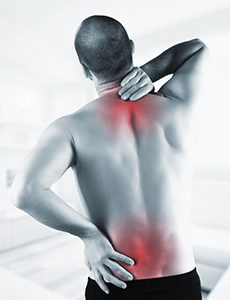 Most people associate tai chi with groups of people in parks who move very slowly in unison. Such controlled movement has some significant benefits for your back. Yoga works wonders for many people, but its lack of movement sometimes prevents dramatic results in terms of back pain. Likewise, running is very good for many people, but the jarring motion can exacerbate back pain instead of relieving it.
Most people associate tai chi with groups of people in parks who move very slowly in unison. Such controlled movement has some significant benefits for your back. Yoga works wonders for many people, but its lack of movement sometimes prevents dramatic results in terms of back pain. Likewise, running is very good for many people, but the jarring motion can exacerbate back pain instead of relieving it.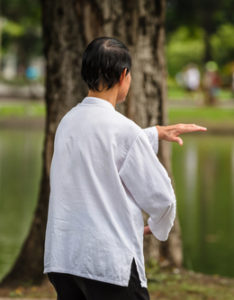 The physical benefits of tai chi often emerge after several months of sustained practice, but the stress relief benefits are often apparent almost immediately. The stretching-and-releasing motion promotes physical relaxation. As a bonus, the tools learned in tai chi may be effective during those parts of the day when stress levels are at their highest. Furthermore, the deep breathing and soft commands from the instructor promote mental relaxation, extending stress relief even further in many cases.
The physical benefits of tai chi often emerge after several months of sustained practice, but the stress relief benefits are often apparent almost immediately. The stretching-and-releasing motion promotes physical relaxation. As a bonus, the tools learned in tai chi may be effective during those parts of the day when stress levels are at their highest. Furthermore, the deep breathing and soft commands from the instructor promote mental relaxation, extending stress relief even further in many cases.